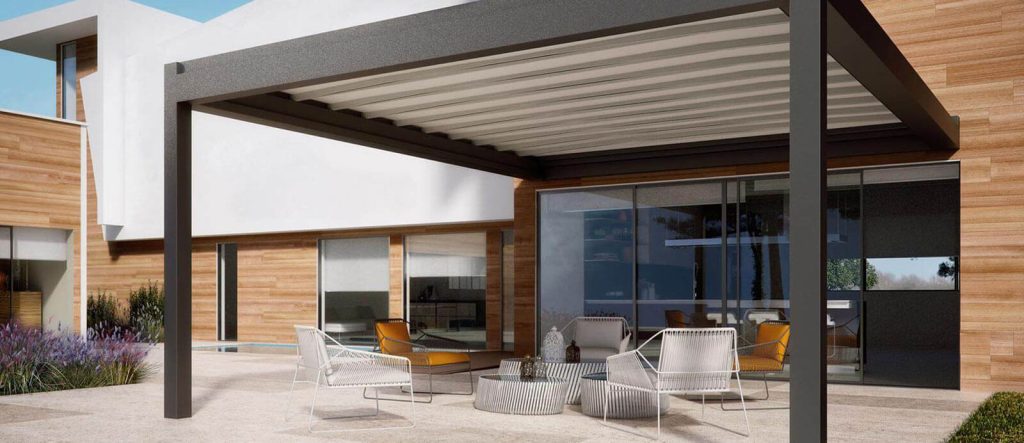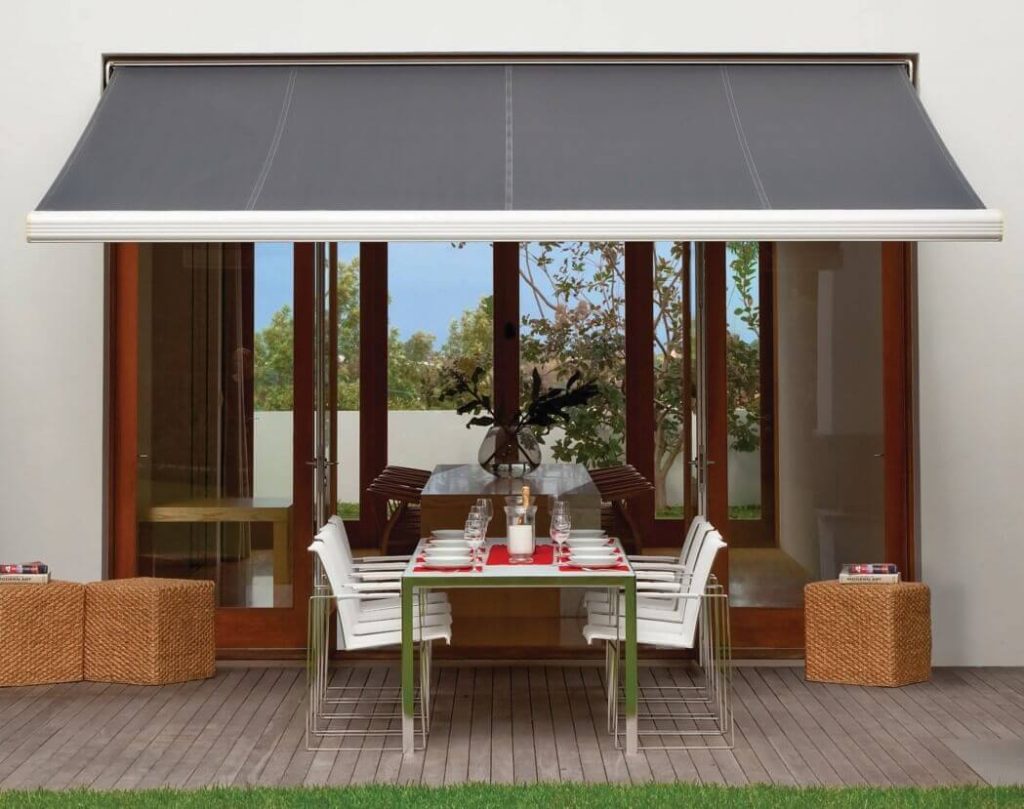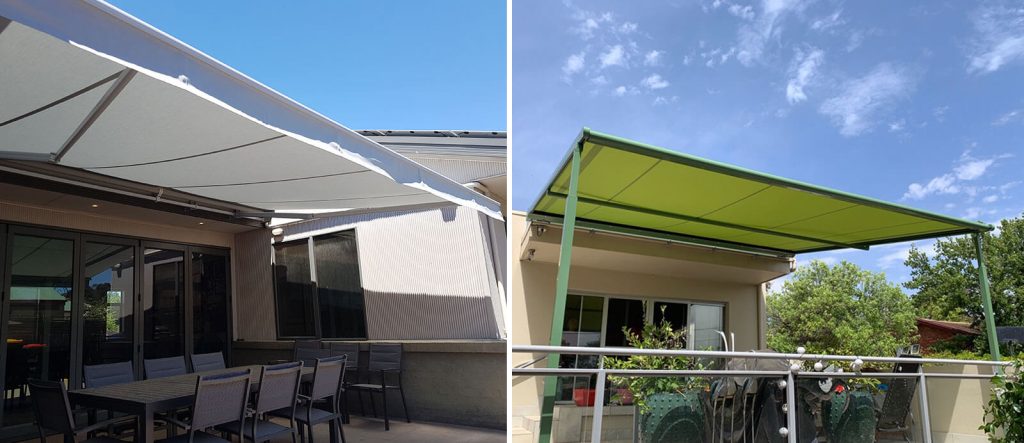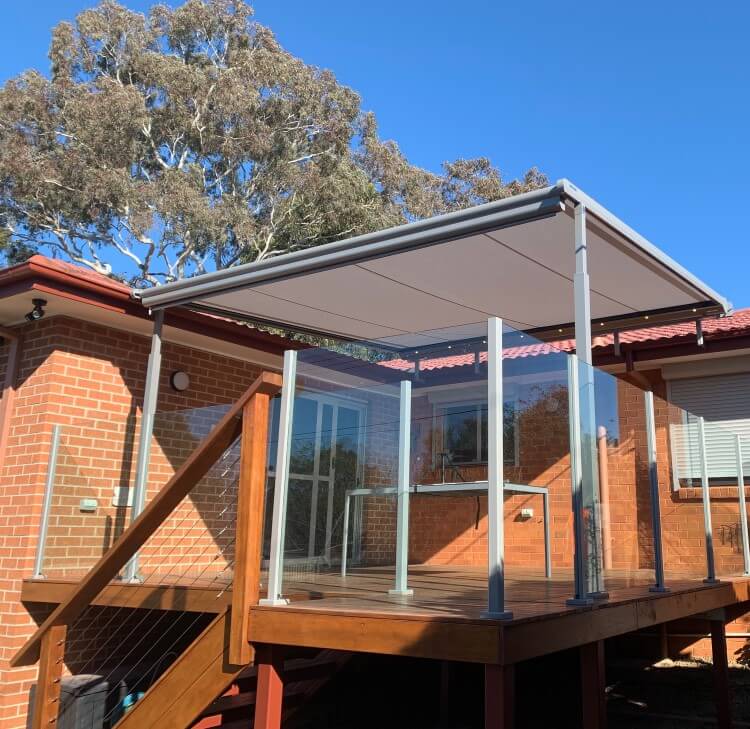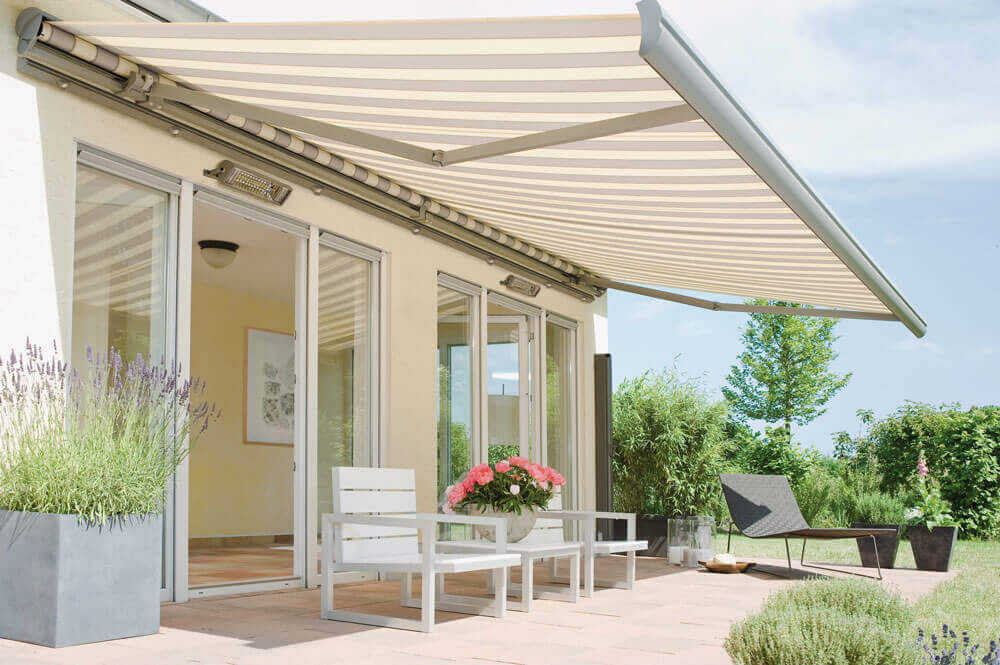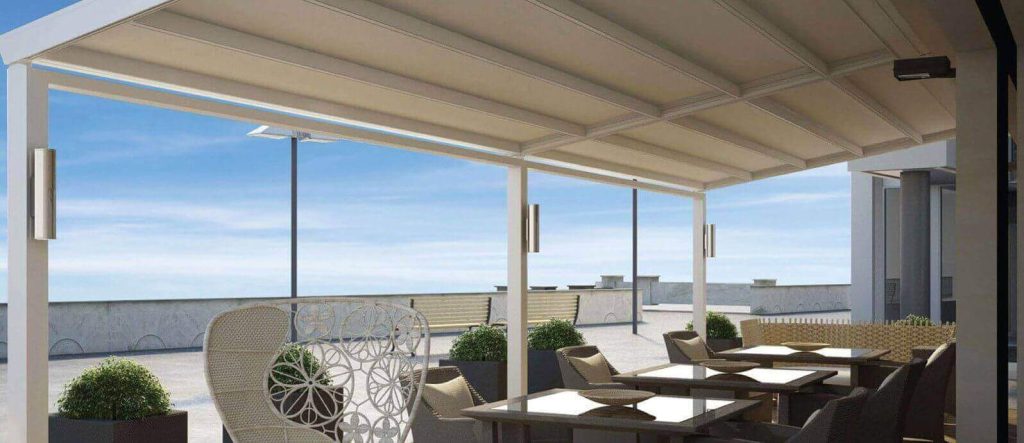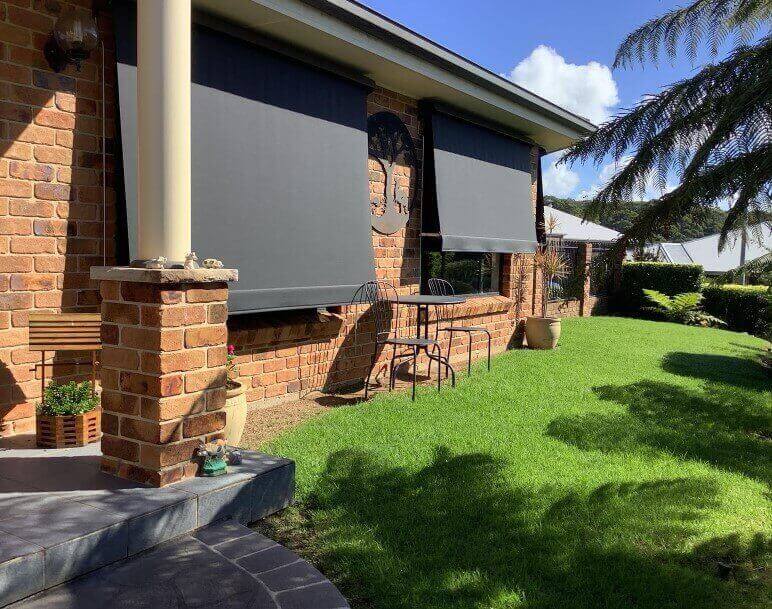Have you been looking for a simple way to effectively keep sunlight away from your room? Look no further than awnings, as they’re designed for this very purpose. Since they directly block sun rays, they’re able to regulate the climate inside for optimum comfort. In fact, did you know that awnings have been known to reduce indoor temperatures by up to 8-15 degrees? Perfect during those sweltering summer months! With the right awning, you’ll be turning on the air-con less, even saving up to 25% in expenditure.
Naturally, this means less energy consumption, more savings on your energy bill and less carbon footprint. All because you made one very smart decision. How good is that?!
An awning can also help protect your flooring and furnishings from harmful UV rays, and is a cost-effective and aesthetically pleasing solution.
You’ll find that they come in many different types, ranging from style to colours and fabrics. They’re both a practical and beautiful addition to your property, be it commercial or residential. So it’s easy to see why they’re so loved by all.
With their ability to create an extended space and improve comfort with protection from the elements, awnings elevate your standard of living.
And a major part of a fully-functional awning is its fabric. Hence, choosing the material that’s right for your needs is key.
This is typically dependent on the climate you’re based in, for which different fabrics are available to choose from.
Here, we’ve put together a list of some of the most common awnings materials out there, along with their features and benefits.
Whether it’s the comforting shade of a folding arm awning or a window awning, you’re sure to find your match.
1. Canvas Awnings
If durability, flexibility and affordability are on top of your list, canvas awnings are worth a look.
The trick to canvas awnings is to ensure that they’re set-up correctly as this ensures they stretch the way they should. This helps them withstand things like snow and heavy rain, the way they were intended to.
However, canvas awnings aren’t exactly polished when it comes to appearance.
They have a rough look about them, which may clash with more lustrous properties. Additionally, if they’re not installed properly, they tend to sag. They’re also not as easy to clean as some other fabrics.
2. Vinyl Awnings
Vinyl is not just for records, it’s for awnings too! If you live in an area that typically sees a lot of rain, then vinyl awnings may be right for you.
Aside from being waterproof, vinyl awnings are easy in terms of maintenance, strong and affordable.
They’re also popular for use as lit awnings, thanks to their translucency.
However, unlike canvas awnings, these aren’t very flexible which makes them more susceptible to tearing.
Additionally, they don’t offer a wide range of colours and styles and you’ll also need to keep an eye out for mould.
Last but not least, it’s not a breathable material; which means you might feel hot sheltering under it.
3. Cotton Awnings
Cotton awnings have a few benefits to them, including being water-resistant and the ability to self-contour.
A major plus is the fact that this material is easy to find as it’s widely available. It’s also super easy to clean and mould-resistant, which makes them ideal for cold weather.
On the downside, cotton does tend to be a bit more pricey when compared to canvas for instance.
And it’s also not as durable as their polyester counterparts. So if you’re looking for something budget-friendly and long-lasting, cotton may not be your best option.
Additionally, they’re flammable, which makes them unsuitable for regions that are prone to bushfires.
4. Polyester Awnings
If you’re after an awning that can stand up to all types of weather, polyester is a great choice.
As the fabric is synthetic, it can handle the rigours of harsh weather conditions and fares well in high-humidity areas.
Very importantly, it also inhibits the growth of mould which should come as a big relief.
We all know how nasty mould can be, so the more you can prevent it the better.
However, it isn’t the most sophisticated fabric out there, and is a bit more rough-n-tumble.
The material is also more prone to fading from the sun, which is something awnings are continually exposed to.
So over time, your awnings may start looking worn down and affect the overall appeal of your home.
Definitely something to keep in mind seeing as how awnings are more of a long-term investment.
5. Acrylic Awnings
On the other hand, acrylic awnings are better with holding their colour, durable and also easy on maintenance.
They’re preferred for windier areas too, as they’re known for their ability to hold up against strong, gusty winds.
Additionally, acrylic materials boast an extensive range of colours and designs for you to choose from.
So no matter how wild and wacky, it’s likely you’ll find it with acrylic awnings – great for when you want to do something out of the norm!
Acrylic is also beneficial as it’s a breathable material.
This means that you won’t feel stuffy or uncomfortable when under the awning.
Additionally, acrylic dries fast, but it’s not exactly waterproof. When it rains heavily, some water may seep through the fabric, so it may not be the best for rain-prone regions.
6. Fibreglass Awnings
Fibreglass is known for its strength and low-maintenance.
One of its key features is that the colour is integrated into the material, ensuring colour fastness and longevity.
You also have the choice of either opaque or translucent fibreglass based on your preference.
While fibreglass awnings are great for allowing natural light in, their nature means they can crack over time. So that’s something worth noting when narrowing down your options.
7. Metal Awnings
Metal awnings come with several advantages.
They’re sturdy, affordable, durable and require low maintenance.
However, they’re typically made out of steel and aluminium which pose their own problems.
Aluminium for instance can dent, and steel can attract rust which means you’ll need to paint it every so often to prevent corrosion. It’s important to also remember that these awnings aren’t very flexible, as they can’t be rolled up unless they include foldable hinges.
That said, they hold up excellently against snow, wind and rain, and can be customised to suit your taste and home’s design.
Definitely weigh the pros and cons of this type of awning carefully, before making a decision.
As you can see, there’s a wide range of materials used for awnings. And while they all have their own features, you probably want to know about an easy way to clean your awnings.
The simplest way is to ensure the awning is first cleaned from all debris, like leaves and mulch.
Once this is done, grab your garden hose and a brush. Give your awning a scrub while running water, and that should dislodge any deep-seated dirt.
When you’re satisfied, give the awning one last rinse and let it air-dry. Hey presto! You’re done!
You can find the perfect awning that meets your decor needs and functional requirements with a little help from us too.
Book an appointment with one of our team, and we’ll come over to assess your space in person. We’ll then make our recommendations and let you know the best solution for your circumstances. We also bring fabric samples, so you can make your choice in the comfort of your own home. It’s time to make the most of your outdoor living areas with awnings.





